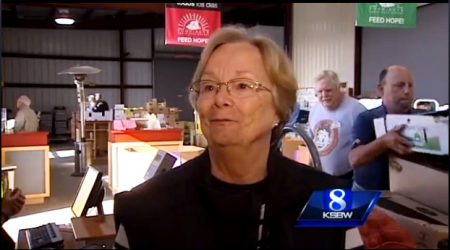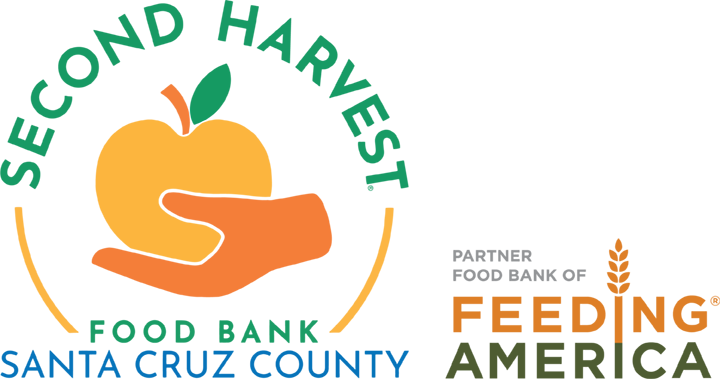“It’s your neighbors,” AR Pointer told me.
I had been asking AR about the organization she started in the small town of Aromas, in south Santa Cruz County, called Neighbors Helping Neighbors. It’s one of Second Harvest’s newest member agencies, and twice a month the group distributes fresh produce provided by the food bank to families in need.
“Who comes to the food distributions?” I had asked AR.
 She answered, “It’s your neighbors. It’s the people next door to you that you don’t even know need help.”
She answered, “It’s your neighbors. It’s the people next door to you that you don’t even know need help.”
“There’s lots of long-time residents” in Aromas, AR explained (AR is Pointer’s first name, not her initials). “We all know each other… [But] almost everybody who comes down says, ‘I’m surprised—I’m surprised to see so many of my neighbors here.’ ”
Even in a small town, knowing who lives where doesn’t necessarily mean you know if they need food.
And it would be easy to assume that most of those in need are people without jobs, or maybe farmworkers, who often struggle to find consistent field work throughout the year. But AR was surprised by who needed food.
“It’s mostly the working poor,” AR explained. “They come rushing in sometimes because we’re only open between 5 and 6” and they’ve just got off of work.
The fact is, working hard and holding a job—or even two jobs—may not pay enough these days to make it through the month, especially given the price of housing in this part of the country.
“Maybe if I was passing out hundred-dollar bills,” she added, “I’d ask for some proof of need. But we’re passing out apples and oranges and lettuce.”
AR started Neighbors Helping Neighbors with her husband Fred in 2014 after witnessing some of the struggles people in her community were going through, day in and day out. On one day, AR noticed kids walking down the street in t-shirts and flip flops, but it wasn’t warm—it was winter, and cold; they didn’t own warm clothes. Another time, an elderly friend of hers seemed uncomfortable about going out to lunch with her; AR later learned it was because her friend’s social security didn’t last that late in the month.
Seeing such need all around her spurred AR to start the program, which grew from distributing fresh produce provided by Second Harvest to hosting senior luncheons, holding clothing renewal workshops, and starting an Adopt-A-Family program. And AR had already been active in the community, helping coordinate the winter feeding program with First United Methodist Church at the Salvation Army.
All these efforts grabbed the attention of the media, and the local NBC affiliate KSBW recently nominated AR for the Jefferson Award, which recognizes individuals across the country who have dedicated themselves to public service. (See KSBW’s interview with AR here.)
Where does AR’s empathy come from? I wondered.
“It comes from listening to other people’s stories,” she told me, from seeing “how grateful they are that someone they didn’t even know was there for them.”
At their first food distribution, at the Community Grange, Neighbors was there for 35 families. To publicize the group, AR put up flyers in the school, and outside on the folding signs she still had from her days as a real estate agent. They now get about 50-60 people every other week, who share the food among 230-250 family members. After their first year, 50 volunteers had distributed nearly 38,000 pounds of food.
AR knows that the people who come through the line need food, but she doesn’t ask them to prove it. “It was very interesting, the number of people that had a problem with that,” AR remarked. “And my response is, ‘I’m happy for you.’ Because what that says to me is, ‘You’ve never been hungry. You’ve never had to stand in line to get food.’ Because walking through a food line is a very humbling experience. Not one that you’ll ever forget.”
“Maybe if I was passing out hundred-dollar bills,” she added, “I’d ask for some proof of need. But we’re passing out apples and oranges and lettuce.”
And many of the people who receive food and see how generous their neighbors are come back to the food line again—as volunteers.
The program “has been a wonderful thing for the community—I can’t take credit for that,” AR tells me. “It’s really the community coming out and helping each other.”
Or—Neighbors Helping Neighbors.
